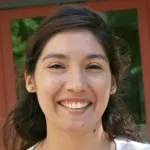
Dr. Kerwyn Casey Huang's laboratory employs diverse interdisciplinary methods of inquiry to understand the relationships among cell shape detection, determination, and maintenance in bacteria. Cell shape plays a critical role in regulating many physiological functions, yet little is known about how the wide variety of cell shapes are determined and maintained. Inside the cell, many proteins organize and segregate, but how they detect and respond to the cellular morphology to end up at the right place at the right time is also largely mysterious. The Huang group uses a combination of analytical, computational, and experimental approaches to probe physical mechanisms of shape-related self-organization in protein networks, membranes, and the cell wall. Current topics of interest are (i) cell-wall biosynthesis, (ii) the regulation and mechanics of cell division, (iii) membrane organization, and (iv) membrane-mediated protein interactions. Ultimately, the manipulation of cell shape may provide a direct tool for engineering complex cellular behaviors.
The lab primarily focuses on bacteria, in which the exquisite patterning of the interior in both space and time is critical for a wide variety of cellular functions. The wide variety of shapes and sizes that bacteria take on can be used as synthetic environment for studying the establishment of intracellular organization and the cellular response to perturbations in morphology.
















